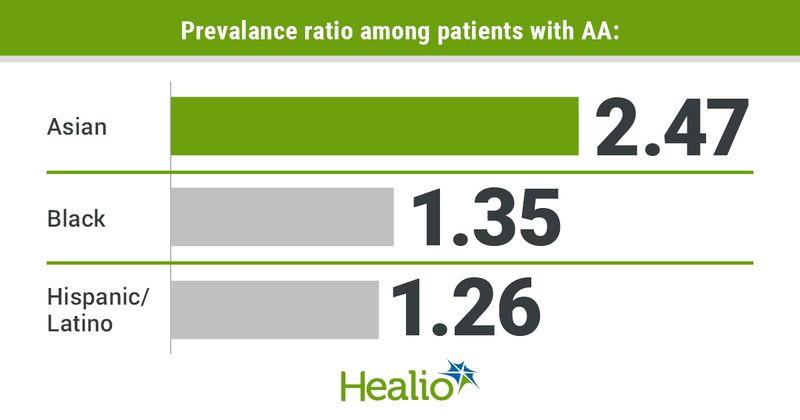Asian Americans experience higher rates of alopecia areata
Asian Americans experience disproportionate rates of alopecia areata and alopecia subtypes compared with people of other ethnicities, according to a study.
“Information on overall prevalence of [alopecia areata (AA)] and its subtypes in the U.S. is limited, even more so as it relates to disease burden among demographic subgroups,” Nene Sy, BS, of the department of dermatology at Northwell Health in New Hyde Park, New York, and colleagues wrote.

In this cross-sectional study, Sy and colleagues analyzed electronic records from the Explorys database which included children, adolescents and adults seeking health care in the U.S. from January to December 2019.
Results showed that of the 1,093,176 patients who met inclusion criteria, 1,812 had at least one sign or symptom of AA (67% women), with only 9.2% of cases including alopecia totalis and alopecia universalis. Of the overall age-and-sex standardized prevalences, children and adolescents exhibited lower rates of AA compared with adults (0.1% vs. 0.18%, respectively), with the highest rates in those aged 30 to 39 years (297 per 100,000; 95% CI, 263-335) and in those aged 40 to 49 years (270 per 100,000; 95% CI, 240-303).
Asian patients exhibited the highest standardized prevalence (414 per 100,000; 95% CI, 306-548). This was followed by patients reporting another race or multiple races (314 per 100,000; 95% CI, 266-368), Black patients (226 per 100,000; 95% CI, 199-255) and Hispanic/Latino patients (212 per 100,000; 95% CI, 129-368).
Relative to the white patient population, which saw the lowest standardized prevalence at 168 per 100,000 (95% CI, 157-179), prevalence ratios were 2.47 (95% CI, 2.17-2.81) for Asian patients, 1.35 (95% CI, 1.26-1.44) for Black patients and 1.26 (95% CI, 1.03-1.55) for Hispanic/Latino patients.
Not including patients who were undiagnosed or did not seek care in health systems was a study limitation, according to the authors.
“There is a significant burden of AA in the U.S. in which people of color, particularly Asian Americans, appear to be disproportionately affected,” Sy and colleagues wrote.
